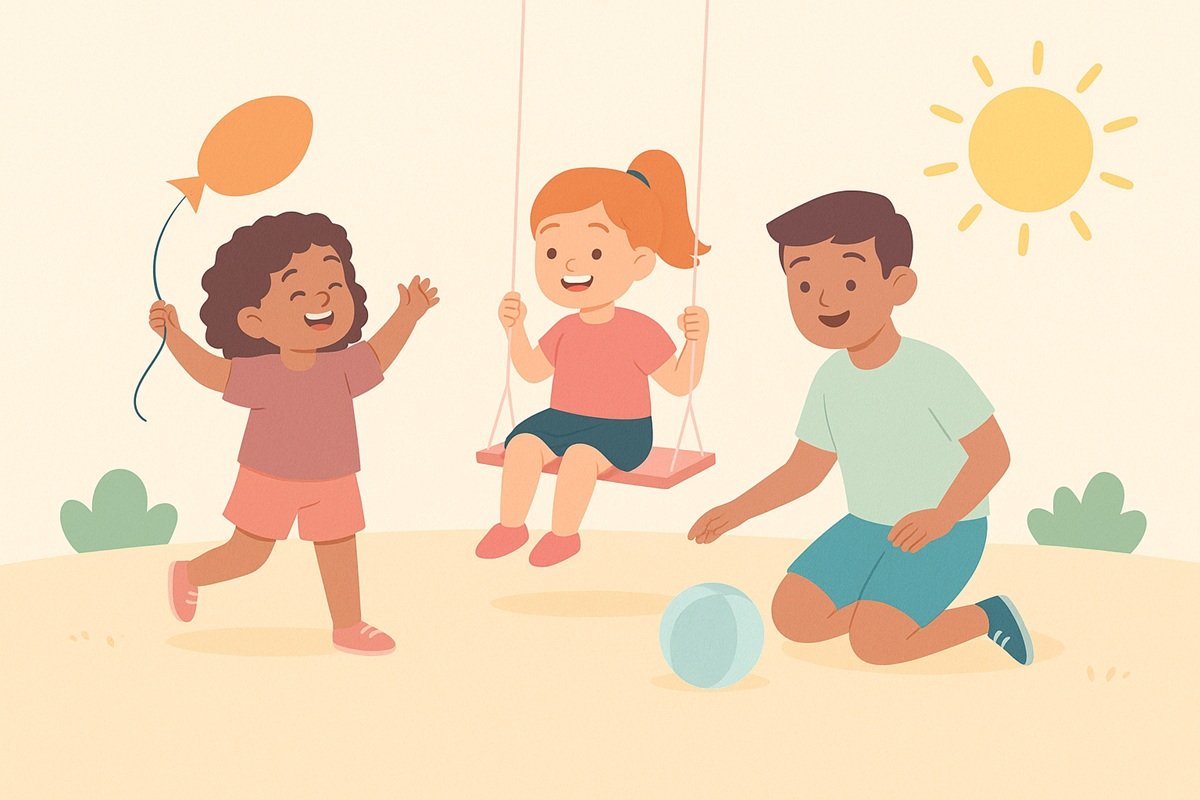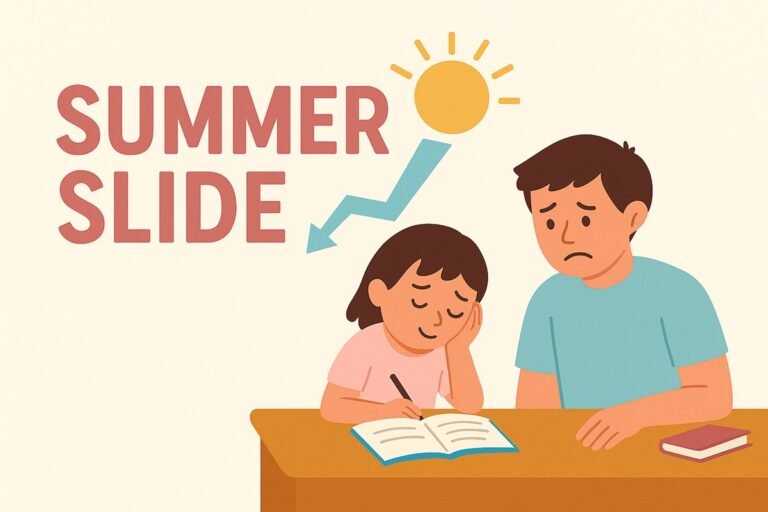Summer is quickly approaching, and with school coming to an end, parents everywhere are beginning to plan how to keep their children engaged, entertained, and enriched during the long summer months. As a mom of two boys who has navigated 12 summers of parenting, I understand the excitement and challenges this season brings.
A well-balanced summer offers children the perfect opportunity to both relax after a busy school year and explore new interests, develop skills, and create lasting memories.
But how do we keep our kids busy and out of danger for three whole months?
In this comprehensive guide, I’ll share 50+ summer activities for kids of all ages that balance fun, learning, and relaxation. Whether you’re looking for outdoor adventures, indoor creativity, educational opportunities, or budget-friendly options, you’ll find plenty of ideas to make this summer unforgettable for your family. From toddlers to teens, rainy days to sunny afternoons, I’ve got you covered with practical suggestions that real parents (like you and me!) can actually implement.
Ready to dive into a summer of fun and growth?
Let’s explore these exciting children’s summer activities that will keep your kids engaged and create wonderful memories for the whole family:
Table of Contents
Outdoor Summer Activities for Kids
When the sun is shining, children naturally gravitate towards the outdoors, where they can run, explore, and engage with nature. According to a study by the National Recreation and Park Association (NRPA), children who spend time outdoors are more physically active, more creative in their play, less aggressive, and better focused. Outdoor play is essential for healthy development, and summer provides the perfect opportunity to maximize outdoor time.
Here are some of the best summer outdoor activities for kids:
1. Backyard Water Olympics
Transform your backyard into an Olympic venue with water-based competitions. Set up stations like water balloon tosses, sponge relays, slip ‘n slide races, and squirt gun targets. This activity costs around $20-30 for supplies and is perfect for children aged 4-12. For extra fun, create medals from aluminum foil and ribbon for the participants.
2. Nature Scavenger Hunt
Create a list of natural items for kids to find in your backyard, local park, or hiking trail. Include things like “something smooth,” “something that makes noise,” “five different types of leaves,” or “something a bird would eat.” This activity is free, requires only paper and pencil for the list, and works well for ages 3-10. It encourages observation skills and connection with nature.
3. DIY Outdoor Obstacle Course
Use what you have around your home to create a challenging obstacle course. Incorporate hula hoops to jump through, jump ropes for hopping, lawn chairs to crawl under, and buckets to weave around. Time each child and let them try to beat their personal best. This activity costs nothing if you use items you already have and is ideal for ages 4-14, promoting gross motor skills and physical fitness.
4. Sidewalk Chalk Art Gallery
Transform your driveway or sidewalk into an art exhibition with sidewalk chalk. Challenge kids to create specific themes each day or host a neighborhood chalk art contest. A pack of quality sidewalk chalk costs around $10-15 and will provide hours of entertainment for ages 2-12. For older kids, introduce them to chalk pastels or 3D chalk art techniques.
5. Butterfly and Bug Watching
Help your children create a simple butterfly or bug observation journal. Provide a magnifying glass and guide them in identifying different species in your yard or local park. This activity costs about $5-10 for a magnifying glass and notebook and is perfect for ages 3-13. Insect observation helps children develop patience, attention to detail, respect for living things, and lack of fear from small creatures.
6. Backyard Camping Adventure
Set up a tent in your backyard for an outdoor camping experience without leaving home. Include activities like stargazing, telling stories with flashlights, and making s’mores. If you already have camping equipment, this activity is nearly free, or you can invest around $50-100 for a basic tent. It’s perfect for ages 4 and up and offers a gentle introduction to camping for younger children.
7. Garden Project
Help your kids plant and tend their own small garden. Whether it’s flowers, vegetables, or herbs, gardening teaches responsibility and patience. Starter supplies cost around $20-30 for soil, seeds, and basic tools, making this ideal for ages 3-16. According to Cornell University, children who participate in gardening projects might be more likely to eat more fruits and vegetables and more willing to try new types. This might be a particularly good idea for picky eaters who refuse healthy fruits and veggies.
8. Neighborhood Bike Parade
Organize a bike parade where neighborhood kids can decorate their bikes, scooters, or wagons with streamers, balloons, and signs. Create a safe route and invite families to watch. Decorations cost approximately $10-15, and this activity works well for ages 3-12, building community connections and creative expression.
9. Outdoor Movie Night
Set up a projector and screen (or use a white sheet) in your backyard for a magical outdoor movie experience. Let kids help choose the movie and set up a concession stand with popcorn and drinks. If you need to purchase a projector, this can be expensive ($100+), but many libraries now loan them out. This activity is best for ages 3 and up, perfect for family bonding or inviting friends for a special evening.
10. Bird Watching and Feeder Making
Create simple bird feeders from pine cones, peanut butter, and bird seed; then hang them where they can be observed. Provide a bird identification guide or app and have kids keep track of the different species they see. This activity costs around $15-20 for supplies and is suitable for ages 4-14. The CornellLab of Ornithology notes that bird watching helps children develop environmental awareness. Moreover, this summer activity can sharpen your child’s observation skills.
Indoor Summer Activities for Kids
When temperatures soar or summer storms roll in, having engaging indoor activities ready can save the day. Indoor activities can be just as enriching as outdoor ones, providing opportunities for creativity, skill-building, and family bonding in the comfort of your air-conditioned home.
Here are some of the best summer indoor activities for kids:
11. DIY Science Lab
Transform your kitchen into a science laboratory with simple experiments using household items. Try making slime, creating volcano eruptions with baking soda and vinegar, or exploring the density of different liquids. Basic supplies cost around $10-20, and this activity is perfect for ages 5-12. Through hands-on science activities at home, you can significantly increase your children’s interest in STEM subjects and set them up for success in the coming school year.
12. Indoor Treasure Hunt
Create clues that lead kids around the house to find a hidden treasure (a small toy, book, or special treat). You can theme the hunt around their interests or a favorite movie. This activity costs only what you choose to spend on the treasure (can be as little as $5) and works well for ages 4-12, encouraging problem-solving and reading skills.
13. Build a Fort Kingdom
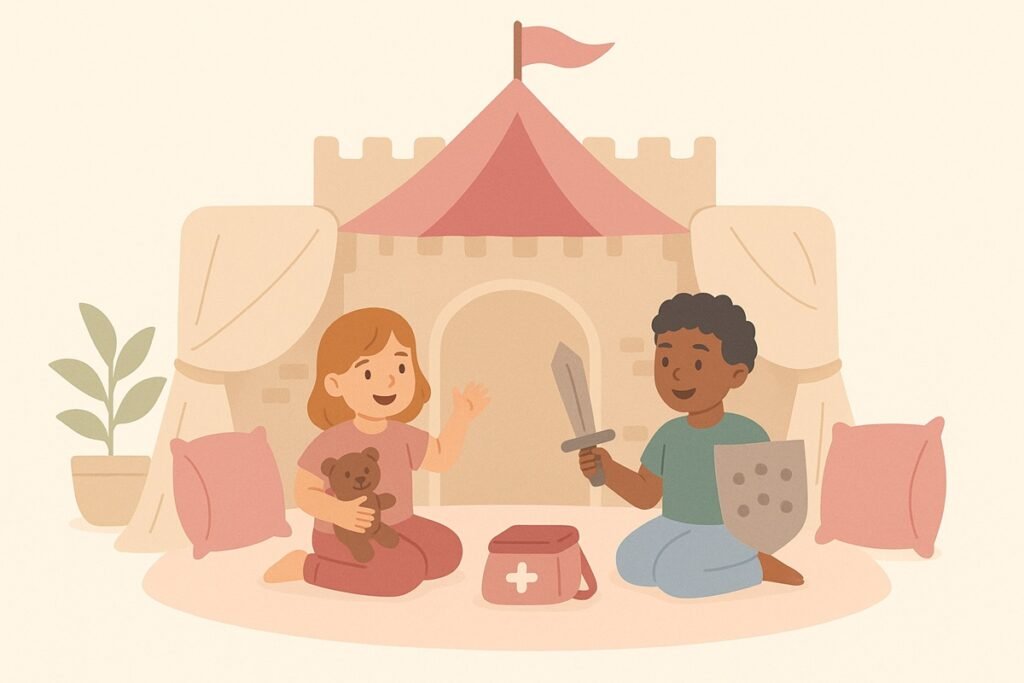
Gather blankets, sheets, pillows, chairs, and clothespins for an epic fort-building session. Once completed, the fort can become a reading nook, movie theater, or imaginative play space. This indoor summer activity for kids is free using household items and is perfect for ages 3-12. Child development experts report that fort building promotes spatial awareness and engineering concepts even in very young children.
14. Family Cooking Challenge
Select an age-appropriate recipe and let kids take the lead in the kitchen. For younger children, try no-bake recipes, while older kids can attempt more complex dishes. Cost varies based on the recipe (typically $10-25 for ingredients), and this activity works for all ages with appropriate supervision. A study by the University of Alberta found that children who cook are more likely to make healthier food choices.
15. Indoor Bowling Alley
Create a bowling lane using empty plastic bottles as pins and a soft ball as the bowling ball. Keep score and hold a family tournament. This activity costs virtually nothing if you use recyclables and is suitable for ages 3 and up. It helps develop hand-eye coordination and basic math skills when keeping score.
16. DIY Board Games
Challenge kids to create their own board game with cardboard, markers, and small objects for game pieces. Once completed, have a family game night to play their creation. Materials cost around $5-15, and this project is best for ages 6-14. Creating games helps children understand rules, fair play, and narrative development.
17. Home Spa Day
Set up a relaxing spa experience with face masks (store-bought or homemade with yogurt and honey), nail painting, and soothing music. This activity costs approximately $10-20 for supplies and is perfect for ages 5 and up. Spa activities teach self-care and provide sensory experiences for children.
18. Shadow Puppet Theater
Use a flashlight and a white wall or sheet to create shadow puppets. Kids can make puppets from cardboard and popsicle sticks, then put on a show. This activity costs about $5-10 for basic supplies and is ideal for ages 4-10. According to early childhood educators, shadow play enhances narrative skills and scientific understanding of light.
19. Indoor Scavenger Hunt
Create a list of household items for children to locate, such as “something red,” “something that makes noise,” or “something older than you.” You can add complexity for older kids with riddles or specific challenges. This activity is free and works for ages 3-12, developing observation skills and critical thinking.
20. Create a Family Time Capsule
Decorate a container and fill it with current photos, drawings, letters to future selves, and small mementos. Seal it with a date to open it (perhaps next summer). This activity costs around $5-15 for the container and decorating supplies and is meaningful for ages 5 and up. Time capsules help children conceptualize time and preserve family memories.
Summer Activities for Younger Kids
Preschoolers and early elementary children have unique developmental needs and shorter attention spans. Activities for this age group should be simple, sensory-rich, and flexible enough to accommodate their natural curiosity and energy.
Here are some of the best summer activities for younger kids:
21. Sensory Bins
Fill a large container with materials like rice, dried beans, water beads, or sand, and add scoops, funnels, and small toys for exploration. This activity costs around $10-15 for materials and is perfect for ages 2-6. Sensory play plays a crucial role in supporting language development, cognitive growth, and fine motor skills.
22. Musical Movement Games
Play freeze dance, musical chairs, or create a simple obstacle course that requires moving to different types of music. This activity is free or low-cost if you need to purchase music and is ideal for ages 2-7. It helps develop listening skills, rhythm, and gross motor coordination.
23. Bubble Bonanza
Make homemade bubble solution (dish soap, water, and a bit of corn syrup) and experiment with different bubble wands made from pipe cleaners, cookie cutters, or straws. This activity costs approximately $5-10 for supplies and delights ages 2-8. Bubbles naturally introduce concepts of science and cause-effect relationships.
24. Toy Car Wash
Set up a washing station for toy cars or plastic animals using soapy water, sponges, and towels. This activity costs just a few dollars for supplies if you don’t already have them and is perfect for ages 2-6. It provides sensory stimulation and practical life skills practice.
25. Nature Collage
Collect leaves, flowers, and other natural items during a walk; then glue them to paper to create nature-based art. This children’s summer activity costs about $5 for glue and paper and works well for ages 3-7. It combines outdoor exploration with creative expression and fine motor practice.
26. Puppet Making
Create simple sock or paper bag puppets with basic craft supplies; then encourage storytelling with the finished puppets. This activity costs around $5-15 for craft supplies and is suitable for ages 3-7. Puppet play has the potential to enhance language development and emotional expression.
27. Mini Indoor Garden
Plant fast-growing seeds like beans or grass in small containers decorated by the children. This activity costs approximately $10-15 for seeds, soil, and containers and is perfect for ages 2-7. It introduces basic science concepts and responsibility while providing the joy of watching something grow.
28. Homemade Playdough
Make and play with homemade playdough using flour, salt, water, oil, and food coloring. This activity costs around $5-10 for ingredients and provides hours of entertainment for ages 2-7. Play therapists note that manipulating playdough helps develop fine motor skills and provides an outlet for emotional expression.
Summer Activities for Older Kids
Tweens and teens need activities that respect their growing independence while providing appropriate challenges and opportunities for skill development. The best summer activities for this age group often involve a degree of autonomy, creativity, and social interaction.
Here are some of the most entertaining summer activities for older kids:
29. Photography Challenge
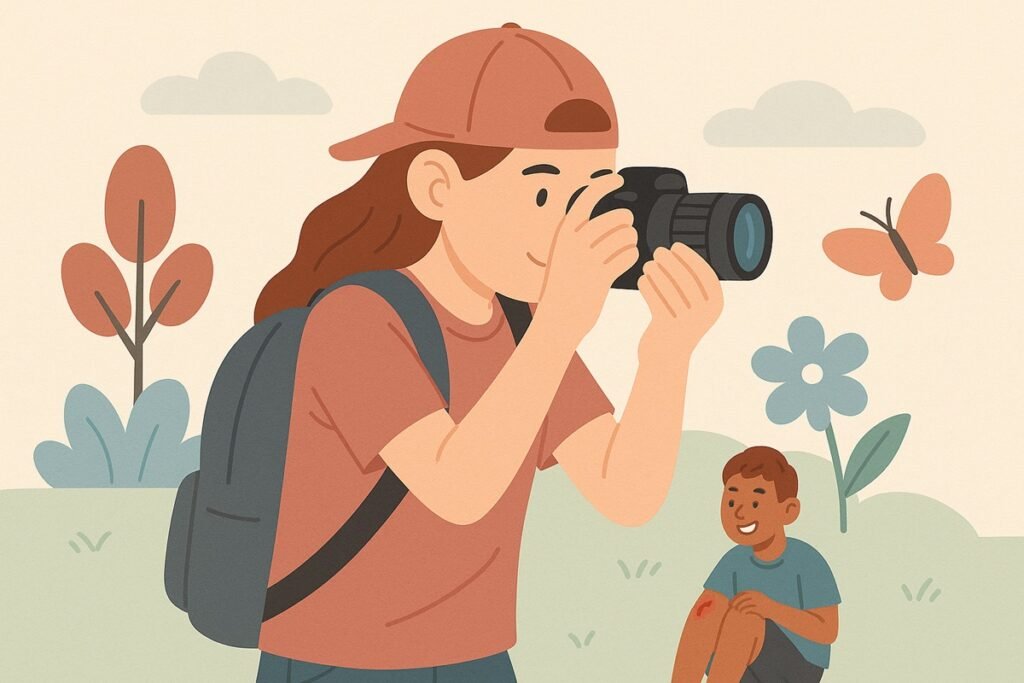
Provide a digital camera or smartphone and daily photography challenges like “capture something purple” or “show emotions without faces.” This activity requires access to a camera (variable cost) and is engaging for ages 10-18. It encourages artistic expression and observation skills.
30. DIY Crafting Business
Help tweens or teens set up a simple crafting business making friendship bracelets, custom T-shirts, or other handmade items. Initial supplies cost around $20-50 depending on the craft, and this children’s summer activity is ideal for ages 11-17. It teaches entrepreneurship, financial literacy, and creative skills.
31. Geocaching Adventure
Download a geocaching app and search for hidden treasures in your community using GPS coordinates. This activity is free except for the cost of transportation and works well for ages 10-18. Geocaching combines technology, physical activity, and problem-solving in ways that particularly engage adolescents.
32. Community Service Project
Connect with local organizations to find age-appropriate volunteer opportunities like park clean-ups, food drives, or helping at animal shelters. This activity is free and meaningful for ages 10-18. Studies show that adolescents who volunteer regularly develop stronger empathy, leadership skills, and community connection.
33. Film Festival
Challenge teens to create short films using smartphones or digital cameras, and then host a family or neighborhood film festival to showcase their work. This activity requires access to recording devices (variable cost) and appeals to ages 12-18. It develops storytelling, technical, and collaborative skills.
34. Cooking Challenge
Inspired by TV cooking shows, provide ingredients and a theme; then let teens compete to create the best dish. This activity costs around $20-30 for ingredients and is perfect for ages 12-18.Cooking activities in general and competitions in specific can increase adolescents’ interest in healthy food preparation as well as teach them to help around the house.
35. DIY Room Makeover
With a small budget, allow teens to reimagine and redecorate a space in the house (usually their bedroom). Costs vary ($50-200) based on the project scope, and this activity engages ages 12-18. It teaches design thinking, budgeting, and project management.
36. Outdoor Adventure Club
Form a group that meets weekly for summer activities like hiking, biking, or paddleboarding, rotating who chooses the adventure. Costs vary by activity, and this works well for ages 12-18. Organized outdoor activities during adolescence increase the likelihood of maintaining an active lifestyle into adulthood as it teaches tweens and teens the importance of outdoor physical activities.
Summer Learning Activities for Kids
Summer learning loss, also known as summer slide, is a real concern, with research showing that students can lose up to two months of reading and math skills during summer break. However, educational activities don’t have to feel like school to be effective. The best summer learning experiences blend education with fun, making knowledge acquisition a natural part of summer exploration.
Here are some of children’s summer activities that support retaining knowledge without feeling the pressure of schooling:
37. Library Reading Program
Participate in your local library’s summer reading program, which often includes challenges, prizes, and special events. This activity is free and suitable for all ages. Participating in summer reading programs helps maintain or improve children’s reading skills and start the school year with greater confidence.
Check out:
38. Math Cooking Projects
Use recipes to practice fractions and measurements, with older kids calculating how to double or halve recipes. This activity costs only what you spend on ingredients (typically $10-20) and works for ages 5-16. It applies mathematical concepts to real-world situations, reinforcing abstract principles.
39. Journaling Adventure
Provide a special notebook for daily or weekly summer journaling, with prompts like “The most interesting thing I saw today…” or “If I could go anywhere this summer…” This activity costs around $5-15 for a nice journal and is beneficial for ages 6-18. Regular journaling holds the power to improve writing fluency and emotional processing.
40. Science in the Park
Take simple science tools like magnifying glasses, binoculars, and field guides to explore local parks or natural areas. This activity costs approximately $20-30 for basic equipment and is educational for ages 5-14. It combines physical activity with scientific observation and classification skills, boosting STEM knowledge and appreciation without in a totally stress-free manner.
41. DIY Weather Station
Create a home weather station with a rain gauge, wind sock, and thermometer; then track daily weather patterns. This activity costs around $15-25 for supplies and engages ages 7-14. This summer activity for kids introduces meteorology concepts and data collection methods, which children find particularly fascinating.
42. Historical Letterboxing
Research local historical sites, and then create a family letterboxing or historical scavenger hunt to learn about your community’s past. This activity costs about $10 for a notebook and stamps and works well for ages 7-16. It combines history education with physical activity and problem-solving.
43. Coding Games
Introduce basic coding concepts through free online platforms like Scratch or Hour of Code, which offer age-appropriate programming activities. This activity is free and suitable for ages 7-18. Early exposure to coding concepts significantly increases interest in computer science careers.
Personal experience: Both my sons absolutely loved learning Scratch at school. They would hours on end (if I allowed it due to limited screen time policies) coding all sorts of things. Though I thought the orange cat was annoying, it’s their favorite!
Laid Back Children’s Summer Activities
Sometimes the best summer days are the unscheduled ones where relaxation and simple pleasures take center stage. In our busy world, teaching children to embrace downtime is an important life skill that contributes to mental health and creativity.
Here are some of the best laid-back summer activities for kids:
44. Cloud Watching
Spread a blanket on the grass and look for shapes in the clouds, discussing what you see. This children’s summer activity is completely free and perfect for all ages. Child psychologists note that quiet observation activities like cloud watching promote mindfulness and imagination.
45. Hammock Reading Time
Set up a hammock or comfortable outdoor reading spot and establish daily reading siesta time. This activity costs around $25-100 for a hammock (if you don’t already have a comfortable spot) and works for all ages. Various resources point out that children who associate reading with relaxation and pleasure are more likely to become lifelong readers.
Check out:
46. Firefly Evenings
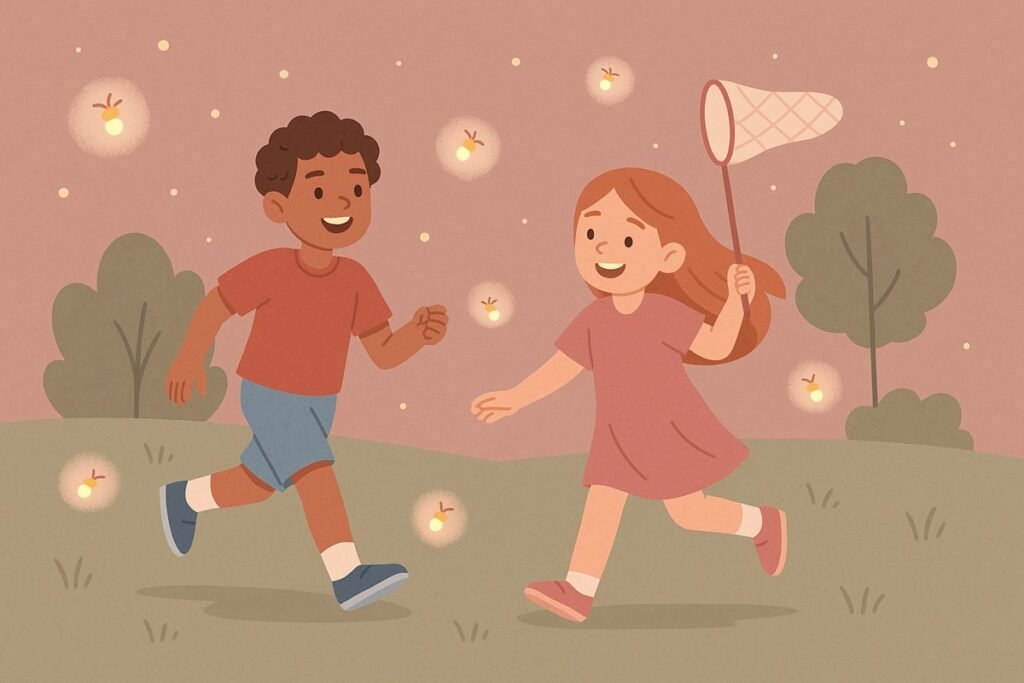
Spend twilight hours catching and observing fireflies (lightning bugs), being sure to release them afterwards. This activity is free and magical for ages 3-12. It creates lasting summer memories while teaching gentle interaction with nature.
47. Stargazing
Use a star chart app or printable guide to identify constellations and planets on clear summer nights. This activity is free (unless you invest in a telescope) and fascinating for ages 5 and up. Informal astronomy activities have the potential to increase children’s interest in space science.
Free Summer Activities for Kids
Summer fun doesn’t have to strain the family budget. Some of the most memorable childhood experiences cost nothing but time and creativity. American parents spend an average of $1,453 on children’s summer activity programs including summer camp activities for kids, but many families find that free alternatives can be just as enriching.
Here are some of the best summer activities for kids that do not cost anything:
48. Park Exploration Challenge
Visit a different local park each week, creating a rating system for playgrounds, trails, or picnic areas. This activity costs only transportation and is suitable for all ages. It encourages physical activity while exploring your community resources.
49. Hometown Tourist Day
Pretend to be tourists in your own town, visiting landmarks, taking photos, and learning about local history. This activity is free and educational for ages 4-18. It helps children develop appreciation for their community and builds cultural awareness.
50. Backyard Water Play
Create water games with sprinklers, hoses, or buckets without the need for expensive water toys. This activity uses minimal water costs and is refreshing for ages 2-12. Water play provides sensory stimulation and cool relief on hot days.
51. Nature Art Studio
Collect natural materials like stones, sticks, and leaves to create temporary art installations outdoors. This children’s summer activity is free and creative for ages 3-16. Environmental educators note that nature art builds connection to the outdoors while developing artistic composition skills.
52. Cardboard Construction
Save large cardboard boxes for constructing playhouses, cars, or rocket ships with just scissors and markers. This activity is free using recyclables and sparks imagination for ages 3-12. Moreover, open-ended play with simple materials like cardboard promotes executive function and creativity.
Summer Ideas for the Entire Family
The most treasured summer memories often come from activities that bring the whole family together. Creating intentional family experiences helps strengthen bonds and establish traditions that children will remember (and possibly continue) into adulthood.
Here are some of the most fun summer activities for the entire family:
53. Family Olympics
Create a day of friendly competition with events tailored to family members of all ages. This activity costs about $10-20 for supplies and works for all family configurations. It promotes healthy competition, physical activity, and family bonding.
54. Progressive Picnic
Plan a picnic where you enjoy different courses in different locations – perhaps appetizers at a park, main course at a lake, and dessert in your backyard. This activity costs only your food budget and transportation and is enjoyable for all ages. It combines culinary experiences with exploration of different environments.
55. Family History Project
Interview grandparents or older relatives and create a family history book or digital presentation together. This activity costs around $10-20 for supplies and is meaningful for ages 5 and up. Importantly, children who know their family stories might show greater resilience and stronger identity formation.
56. Hometown Bucket List
As a family, create a list of local summer activities or destinations you want to experience, and then check them off throughout the season. This activity varies in cost and works for all ages. It encourages family input and creates shared anticipation and memories.
57. Digital Detox Day
Designate a day when all electronic devices are turned off, replacing screen time with board games, outdoor activities, and family conversations. This activity is free and beneficial for all family members. Child development specialists recommend incorporating regular tech-free family time into your parenting style for optimal social development.
Disclosure: This post contains affiliate links. As an Amazon Associate, I earn from qualifying purchases. I may earn a commission if you click and make a purchase, at no extra cost to you.
How to Prepare for Summer with Your Children
Preparation can make the difference between a chaotic summer and a smoothly flowing one. Taking time to organize supplies, safety measures, and loose plans helps ensure that you can make the most of the season while minimizing stress.
Here are the main items that you need for a stress-free summer:
First Aid Essentials
Summer adventures often come with minor bumps and scrapes.
Stock a first aid kit with:
- Band-aids in various sizes
- Antibiotic ointment
- Hydrocortisone cream for bug bites and rashes
- Children’s pain reliever (appropriate for your child’s age)
- Tweezers for splinters
- Digital thermometer
- Aloe vera gel for sunburns
Having a properly stocked first aid kit and basic first aid knowledge significantly can reduce the negative impact of common childhood injuries.
Sun Protection
Protecting children from harmful UV rays is essential during summer months.
Dermatologists recommend
- Broad-spectrum sunscreen (SPF 30+) applied 15 minutes before going outside and reapplied every 2 hours
- Protective clothing, including wide-brimmed hats and UV-blocking sunglasses
- Planning outdoor activities before 10 AM or after 4 PM when possible
- Creating shade with umbrellas, tents, or natural tree cover
Heat Safety
Children are more susceptible to heat-related illness than adults.
Experts recommend:
- Ensuring children stay well-hydrated throughout the day
- Scheduling regular breaks from high-energy activities
- Recognizing early signs of heat exhaustion (excessive sweating, paleness, and muscle cramps)
- Never leaving children in cars, even with windows cracked
Summer Supplies Checklist
Stock up on these essentials to be ready for impromptu summer fun activities:
- Art supplies: Construction paper, washable markers, child-safe scissors, and glue sticks
- Outdoor gear: Bubbles, sidewalk chalk, balls, and jump ropes
- Water play items: Sprinklers, water balloons, and buckets
- Rainy day supplies: Board games, puzzles, and craft kits
- Reading materials: New books, library card, and summer reading lists
Bug Protection
Minimize insect issues with these preventative measures:
- EPA-approved insect repellent appropriate for children’s ages
- Long sleeves and pants for high-risk areas (woods and grassy fields)
- Avoiding scented soaps and shampoos that attract insects
- Checking for ticks after outdoor play in wooded areas
Nutrition and Hydration
Maintain healthy eating habits during the less structured summer months by:
- Preparing grab-and-go healthy snacks in advance
- Involving kids in meal planning and preparation
- Creating a hydration station with water bottles easily accessible
- Establishing regular meal and snack times despite varied activities
Final Thoughts
As we wrap up this guide to summer activities for kids, remember that the most important element of a successful summer isn’t checking off every activity on this list or creating picture-perfect moments. What matters most is the connection, joy, and memories you build together.
Children remember experiences more vividly than material possessions. Experiences provide more enduring happiness than material purchases. The summer activities you choose to engage in with your children become part of their life story and shape their understanding of family, leisure, and learning.
Balance is key to a fulfilling summer. Mix structured activities with plenty of free play time. Combine educational opportunities with pure fun. Allow for both high-energy adventures and restful downtime. Be flexible enough to follow your child’s interests while providing enough structure to prevent the endless chorus of “I’m bored!”
How does your family spend summer together? What activities have created the most lasting memories for your children? Have you discovered summer gems that weren’t included in this list? I’d love to hear your experiences and suggestions as we build our virtual village of parents supporting each other through the joys and challenges of raising children.
Let’s make this summer one that our children will look back on with smiles and stories for years to come. After all, we only get 18 summers with our children before they begin to forge their independent paths – let’s make each one count!

